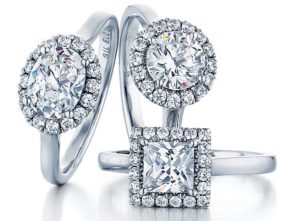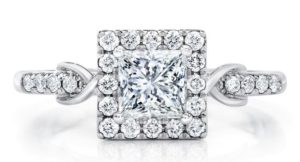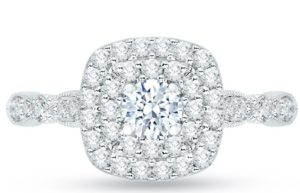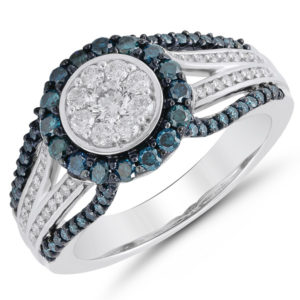Selling the Diamond Dream
“All value in the diamond business emanates from the consumer desire for our product. Without that consumer desire, there would be no investment in exploration, there would be no investment in new mines, no one would build any stores, and none of us would have anything to do because there would be no one willing to pay for it.”
 That was the message imparted by Stephen Lussier, CEO of De Beers Forevermark, at the annual Rapaport State of the Diamond Industry address, JCK Las Vegas, with the caveat that desire for diamonds is largely dependent on confidence in the product. He reassures that the diamond dream is still alive and well, despite today’s market challenges.
That was the message imparted by Stephen Lussier, CEO of De Beers Forevermark, at the annual Rapaport State of the Diamond Industry address, JCK Las Vegas, with the caveat that desire for diamonds is largely dependent on confidence in the product. He reassures that the diamond dream is still alive and well, despite today’s market challenges.
Lussier cites global diamond jewelry sales increased to a new record high of $81 billion in 2014, with the major markets of the United States, China and India all growing. He notes that the bridal category is still the powerful foundation of the diamond business, and that diamond is still the No. 1 most desired gift of all luxury gifts. “That’s not a bad place to be,” he says.
But Lussier advocates the millennial generation must be engaged in this dream and jewelers must find new ways to teach them about it, outlining four areas for the industry to pursue: defend the core symbolism of diamonds, discuss timeless versus disposable fashion, win in the digital space, and fight for the integrity of the industry.
Among the touch points: diamond’s association with love and marriage; vault of emotional memories; timelessly stylish; inherent values; trade-in/trade-up/upcyle/recycle/pass-on. Lussier advises jewelers invest in brands that do the emotional work for us; dramatically improve their marketing content; and partner with midstream suppliers.
Curate for Customers
Jewelers need to connect with their customers on a personal level, touts Rebecca Foerster, executive vice president, strategic planning and marketing for Leo Schachter Diamonds. “It’s not about preaching or dictating. The sales approach should be from the standpoint of the customer, who already has a basic understanding of the 4Cs. Embrace the customer’s education and help them make the right choice based on their needs. What are they looking for? What’s the objective? Consider yourself an editor or curator who can take them to the diamonds and brands that suit them best.”
While millennials are all about differentiation, customization and being a part of the process, they value expertise from professionals knowledgeable about their products, notes Neil Shah, CFO for Shah Luxury, New York. Beyond the 4Cs and diamond grading, Derek Palmer, global marketing director for Pluczenik, New York cites that consumers care about things like the environment, reliable sources, sustainability, and community involvement but may not verbalize it.
Embrace Technology
Shah notes that the millennials grew up receiving technology as a gift, where Boomers and GenXers received jewelry for a milestone event or birthday like sweet 16, and concurs with Lussier that they must be taught about jewelry and the meaning behind it. But he advocates using the tools they’re comfortable with.
 Millennials are using their smart devices to look up things in real time. “Retailers need to embrace this reality and make it part of the conversation,” says Foerster. “Have an iPad or tablet on hand to look things up from informational sites to virtual inventories, or to explore custom options. Come from the same platform, speak their language. Identify what appeals to them and use it as a guideline.”
Millennials are using their smart devices to look up things in real time. “Retailers need to embrace this reality and make it part of the conversation,” says Foerster. “Have an iPad or tablet on hand to look things up from informational sites to virtual inventories, or to explore custom options. Come from the same platform, speak their language. Identify what appeals to them and use it as a guideline.”
Schachter & Co is big on apps, says Foerster, introducing in October the Leo Diamond app for Sterling stores, with plans to launch a LVE app for independent retailers. “We believe apps are a great way to communicate. The Leo app is dynamic and interactive, with social media and gaming features, and the opportunity to build your own ring.” She advocates immersing in social media. “Conduct special promotions, contests, and events to keep customers engaged.”
Listen, Share, Engage
Read what they read in print and online. Watch the TV shows they watch and make note of the jewelry styles you see onscreen. Above all, listen to them when they come into your store, advises Russell Shor, GIA senior industry analyst. “Try to sell them what they want to buy, not what you want to sell them. There has been quite a bit of discussion about millennial consumers valuing experiential things over luxury. If their visit to your store is a good experience, even if no sales occur, they’re more likely to return.”
Shor advocates jewelers advertise emotion and creative design, not price. Engage people on social media. Post interesting facts about gems (visit GIA’s Gem Encyclopedia on gia.edu), let them know you’re a fixture in your community, and assure far-flung online shoppers that you’re happy to provide them the same level of service. Above all, keep them engaged and happy with you.”
Be Adaptable
Jeff Weinman, executive vice president sales, Tache USA, New York reminds jewelers that websites must be adaptable to a variety of smart devices since consumers use their cell phones and tablets to do much of their shopping and surfing. “Jewelers must invest online. They must invest in engaging content, and to show and sell their jewelry online.”
Jewelers should work with vendors who keep bestsellers in stock, advises Grant Mobley, vice president sales, Simply Diamonds/JewelMark, New York. “We have an entire playbook of 400 items guaranteed in stock. We have that confidence in what we’re selling and the top trends.” He notes that he’s a staunch supporter of jewelers who use inventory management systems to help determine best and fresh sellers for their business.
Be a Resource
Jewelers are not just selling a product, they’re selling what they know. “Position your store as the place to gain information, be inspired, and see special things,” says Foerster. “Advise about other retailers too, for wedding services or fashion boutiques. Be a source for the best vendors, consumers will value your brand.”
Mobley says he  follows a philosophy of not having to say no. “Even if it’s something we don’t have, I help source it. I make myself easily accessible with email, text and cell phone. I also incentivize customers to order online with free shipping. It’s all about keeping the lines of communication open and flowing!”
follows a philosophy of not having to say no. “Even if it’s something we don’t have, I help source it. I make myself easily accessible with email, text and cell phone. I also incentivize customers to order online with free shipping. It’s all about keeping the lines of communication open and flowing!”







